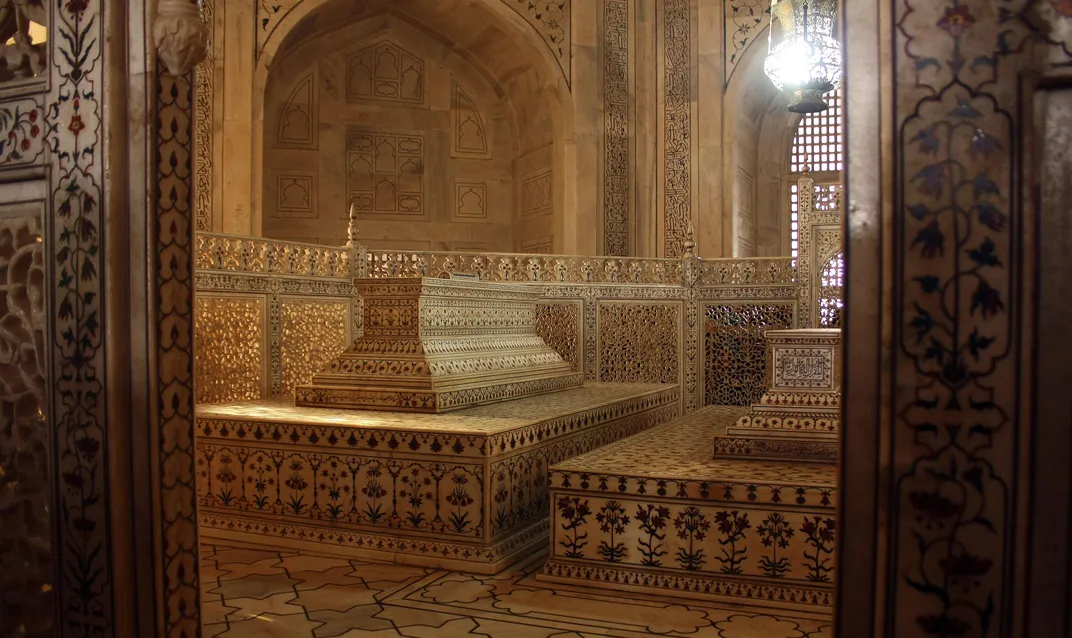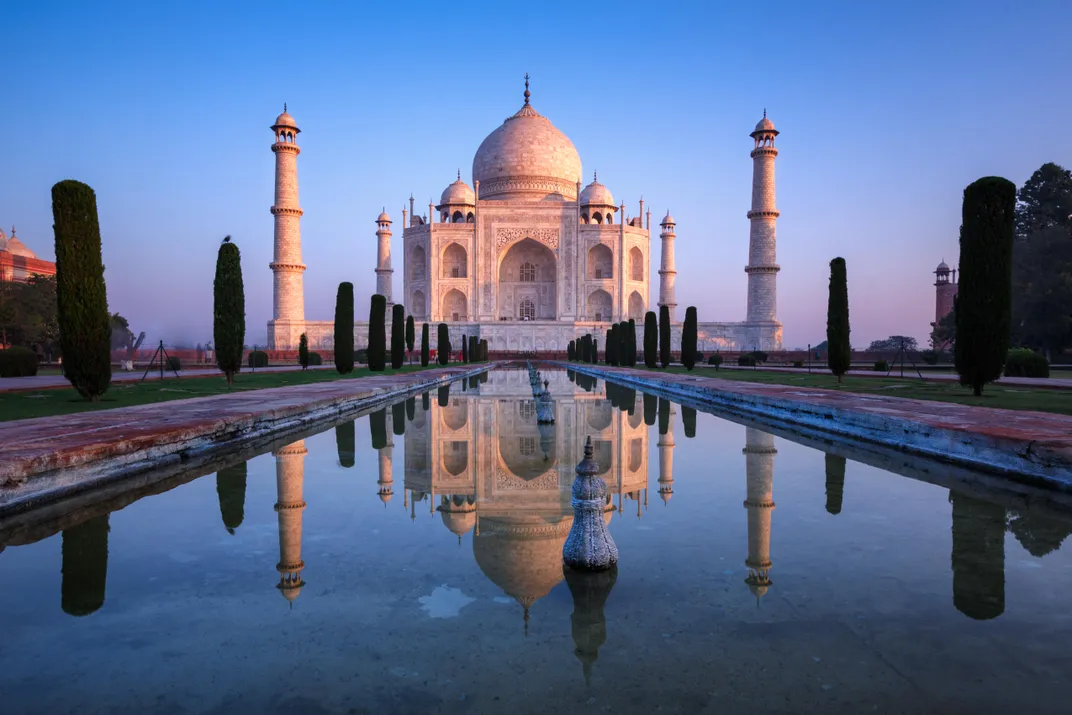Eight Secrets of the Taj Mahal
One of the world’s greatest memorials to love remains a place of mystery
:focal(1471x1061:1472x1062)/https://tf-cmsv2-smithsonianmag-media.s3.amazonaws.com/filer/b6/30/b630b48b-7344-4661-9264-186b70531bdc/istock-478831658.jpg)
This story originally appeared on Travel + Leisure.
For first-time visitors to India, it’s almost impossible to skip the bucket list-worthy Taj Mahal. The mausoleum in Agra is India’s most famous monument, and a sublime shrine to eternal love. Built from between 1632 and 1647 by the Mughal Emperor Shah Jahan, the Taj Mahal was dedicated to Jahan’s favorite wife, Mumtaz Mahal, who died during childbirth. But despite its iconic stature, much of its history is still shrouded in mystery. Here are a few things about the marble-clad marvel you might not have known.
Optical illusions can be spotted everywhere
The architects and craftsmen of the Taj Mahal were masters of proportions and tricks of the eye. When you first approach the main gate that frames the Taj, for example, the monument appears incredibly close and large. But as you get closer, it shrinks in size—exactly the opposite of what you’d expect. And although the minarets surrounding the tomb look perfectly upright, the towers actually lean outward, which serves both form and function: in addition to providing aesthetic balance, the pillars would crumble away from the main crypt in a disaster like an earthquake.
The most famous myth is probably false
According to a popular legend, Shah Jahan wanted desperately for the mausoleum to be an exquisite masterpiece without an equal. To ensure no one could recreate the Taj Mahal’s beauty, Shah Jahan supposedly severed the hands and gouged the eyes of the artisans and craftsmen. Despite the prevalence of this gruesome tale, historians have found no evidence to support the story—though it does heighten the drama of the romantic tragedy.
Both of the cenotaphs are empty

Inside the Taj Mahal, the cenotaphs honoring Mumtaz Mahal and Shah Jahan are enclosed in an eight-sided chamber ornamented with pietra dura (an inlay with semi-precious stones) and a marble lattice screen. But the gorgeous monuments are just for show: The real sarcophagi are in a quiet room below, at garden level.
It’s (almost) perfectly symmetrical
The Taj Mahal is the pinnacle of Mughal architecture, constructed with impeccable symmetry according to the doctrines of the period’s style. Minarets flank the domed tomb, and a central pool reflects the main building. The gardens—an earthly representation of paradise—are divided into quadrants, and twin red sandstone buildings (an east-facing mosque and a west-facing guesthouse) give the mausoleum complex a balanced harmony. There is, however, one exception. Shah Jahan’s cenotaph is peculiarly positioned west of the central axis, throwing off the equilibrium. The odd placement has led many to believe he never meant to be buried there at all.
The Taj gets regular facials
Age and pollution has taken a toll on the Taj Mahal’s gleaming white marble façade, which has turned brownish-yellow under the sooty conditions. Occaionally, the monument is given a spa day. Specifically, a mudpack facial called multiani mitti. This traditional recipe used by Indian women to restore radiance is applied, and then washed off with brushes, after which the Taj’s blemishes vanish, and its glow returns.
It changes color throughout the day

One of the allures of the Taj Mahal is its constantly changing hue. From dawn to dusk, the sun transforms the mausoleum. It may seem pearly gray and pale pink at sunrise, dazzling white at high noon, and an orange-bronze when the sun sets. In the evenings, the Taj can appear translucent blue. Special tickets are even sold for full moon and eclipse viewings.
A second, black-marble Taj Mahal was being planned
Remember the haphazard placement of Shah Jahan’s cenotaph? Local lore says that Shah Jahan wanted to construct a shadow image across the Yamuna River—an identical, but opposite Taj Mahal hewn from black marble—where he would be entombed. It was said that construction came to a halt after Shah Jahan was deposed by his son (ironically, a child of Mumtaz Mahal) and imprisoned at the nearby Agra Fort. Some historians have dismissed this story as folklore, too.
It was as much of a symbol of power as it was of love
Accounts have shown that, as a leader, Shah Jahan was more ruthless than romantic. For all its associations to devotion and ardor, the Taj was also a source of propaganda. The complex’s ordered symmetry symbolizes absolute power—the perfection of Mughal leadership. And its grand scale and extravagance (crystal, lapis lazuli, makrana marble, turquoise) only brought glory to Shah Jahan’s reign.
Other articles from Travel + Leisure: